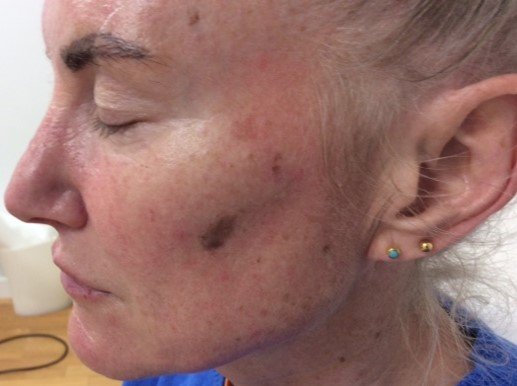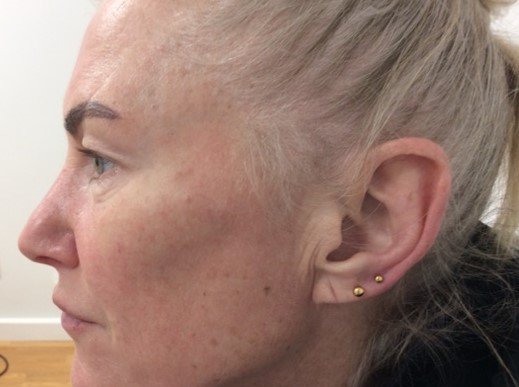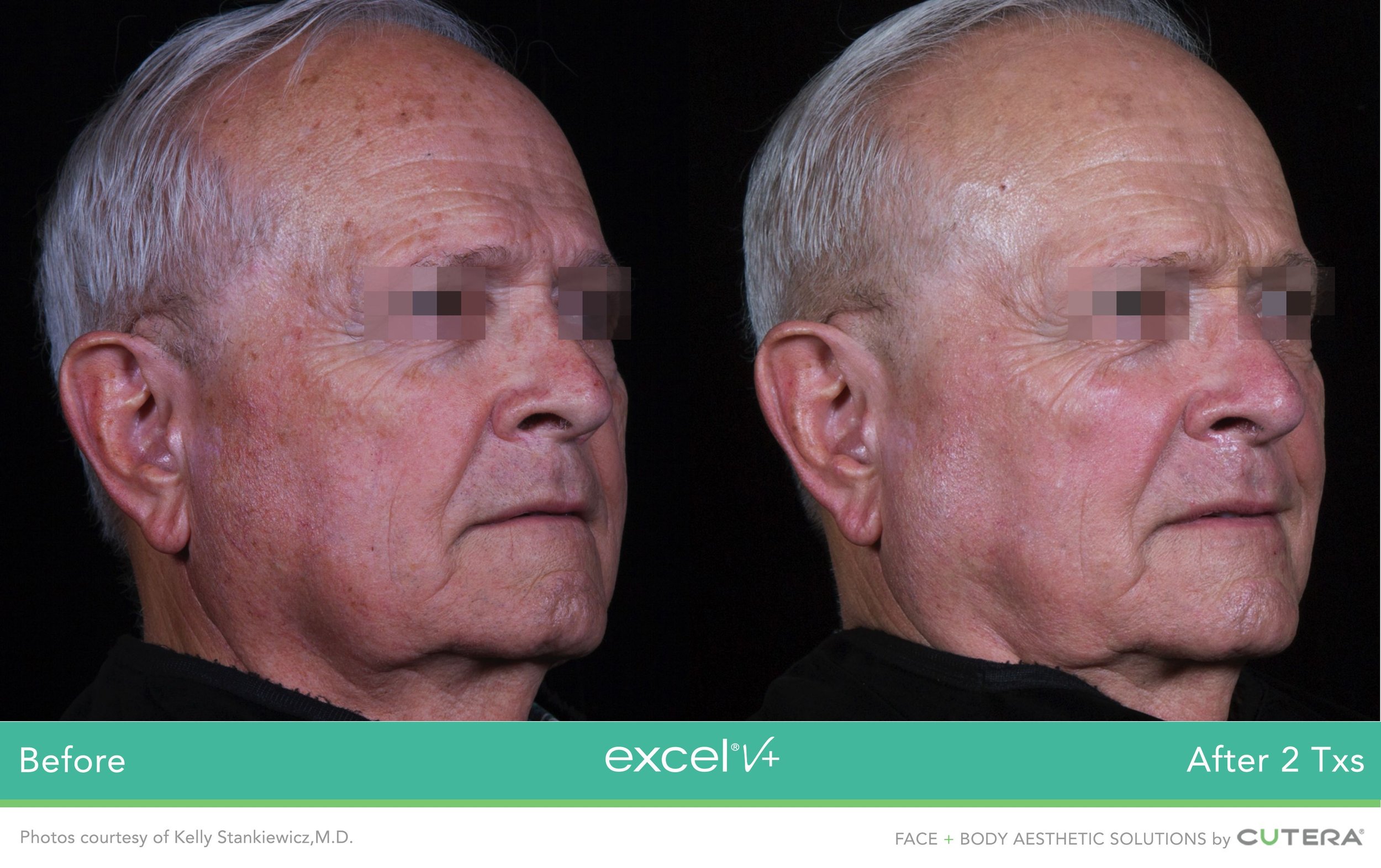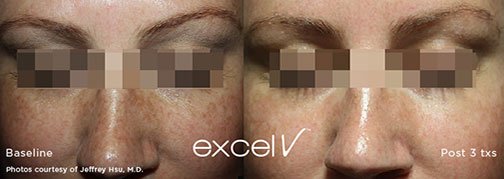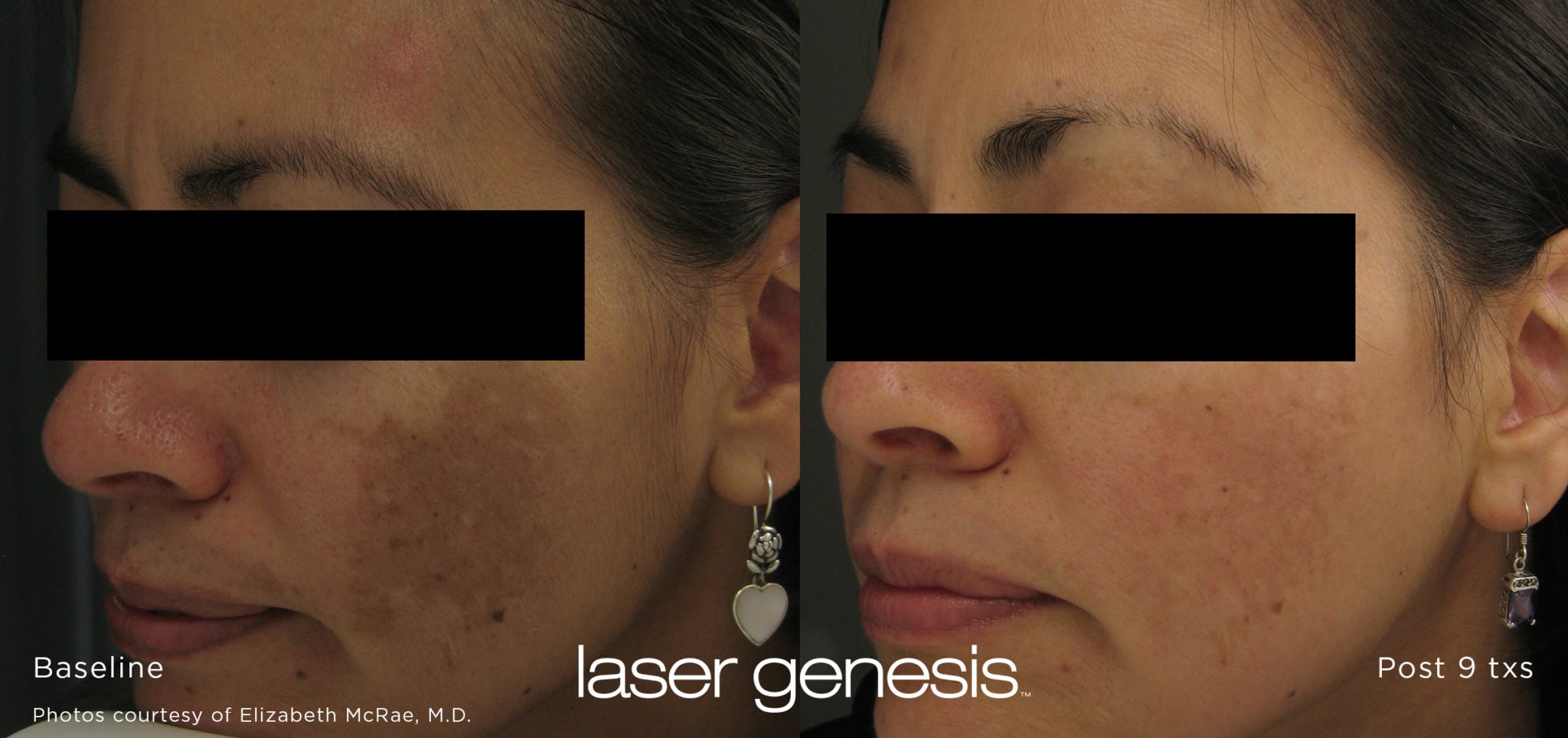Pigmentation
If you have dark spots on your skin, it can be hard to tell if it is sun damage, hyperpigmentation or melasma, as these are all common conditions. While they are different dermatological conditions, they can look alike, and are caused by similar factors.
Hyperpigmentation
Hyperpigmentation is an umbrella term used for conditions where one patch of skin becomes noticeably darker than the surrounding skin. This term covers a number of more specific conditions such as liver spots, freckles and melasma.
Although different types of hyperpigmentation can be caused by various factors such as acne scarring, medications or inflammation from other conditions, one of the main causes of hyperpigmentation is sun exposure. When we leave our skin unprotected, harmful UV rays can cause damage that causes the skin to produce more pigment than normal.
Most hyperpigmentation is harmless, and many forms are readily treatable using topical creams and cosmetic treatments. However, it’s important to have any persistent or changing areas investigated by a Dermatologist.
Melasma
One specific type of hyperpigmentation is melasma. Although it is also a condition characterized by darker patches of skin, namely affecting the cheeks, nose, chin, upper lips and forehead, melasma is differentiated from other forms of hyperpigmentation by its cause. Rather than being purely sun-related, melasma is caused in part by hormonal and vascular changes within the body. This is why melasma is often referred to as “the mask of pregnancy,” as pregnant women are much more likely to have this condition. In fact, melasma is found more prevalently in women – pregnant or not – largely because of this hormonal cause.
Melasma is treated with sun protection, cosmetic camouflage, topical treatments, such as peeling and lightening agents, oral medications and laser.
Treatment
Pigmentation laser treatment is performed with our FDA-approved Cutera Excel V+ laser. The Excel V+ laser uses a high-power green laser in order to target blood vessels and pigment with abnormalities. The treatment works through the targeted application of clinically proven laser wavelengths. We target these wavelengths to specific areas of skin concern and work to diminish uneven tone and stimulate rejuvenation.
The wide range of conditions that this treatment can address includes pigmentation, facial redness, Rosacea, port wine stains, leg veins, sun damage pigmentation, and venous lakes (purple lesions on the lips). Unlike some other lasers, there is no anaesthesia required during the procedure, thanks to the automatic cooling technology, which produces continuous cooling throughout your treatment, maximising patient comfort.
All skin types can benefit from treatment from the Excel V+ laser (1-6).
Book in for your free consultation with Dr Bernadette Conlan, Medical Advisor to Laserase. The treatment is quick and painless, and there is no need for any needles or anesthesia.
Laser Pigmentation FAQs
+ Am I suitable for laser pigmentation?
Most clients are suitable for this treatment but during your consultation Dr Conlan will assess your concerns and ensure this is the correct treatment for you.
+ How many sessions will I require?
In general, we recommend 3-6 treatment sessions to achieve the desired outcome. However, depending on the severity of your condition, your treatment sessions may vary.
+ What is the downtime and likely side effects?
You can usually put on makeup and resume your typical activities right away after treatment. After treatment, it’s normal to expect some redness and/or swelling. Swelling will peak 24 to 48 hours after a full-face treatment but subside within a few days. Following treatment, treated brown spots will darken and peel off in 3 to 5 days.
+ Does it hurt?
There are two modes of treatment in the Cutera Excel V+ laser. For the Coolview mode, treatments shouldn’t hurt more than a brief rubber band snap against the skin. For the Laser Genesis mode, treatments are generally comfortable apart from a warmth sensation to the skin.
+ Pre & Post Care
Before your treatment:
- Do not wear makeup on the day of treatment
- No sun-tan or self-tanners 4 weeks prior to treatment this includes spray tans, tanning lotions, sun beds
- Some medications or supplements may increase the risk of bruising check with Dr Conlan.
- Avoid treatments that may irritate the skin for 1-2 weeks prior to treatment (ie. waxing, depilatories etc.)
- Notifiy clinic with any changes to your health history or medications since your last appointment.
- History of herpes or cold sores may require an anti-viral prescription prior to treatment.
After your treatment:
- Avoid sun exposure and use sunscreen to prevent further sundamage.
- Bruising, redness and swelling are common and resolve with time.
- Treated pigment will turn darker (brown to black) within 24-48 hours.
- Do not pick at treated areas.
- Treated pigment will exfoliate off the face in approximately 1 week.
- Treated pigment will exfoliate off the body in approximately 2-3 weeks.
- Avoid heat - hot tubs, saunas etc for 1-2 days.
- Avoid skin irritants a few days post treatment such as products containing tretinoin, retinol, benzoyl peroxide, glycolic/salicylic acids etc. Please ask Dr Conlan if you are unsure.


